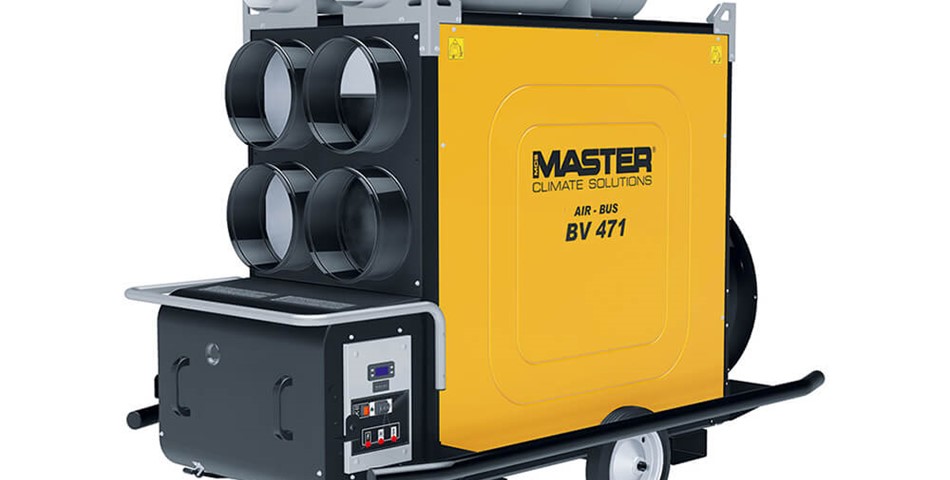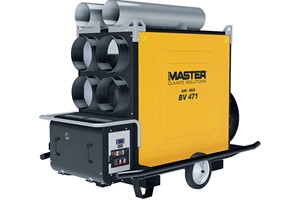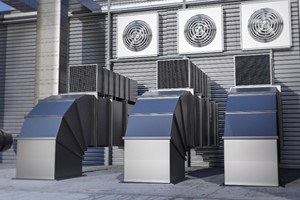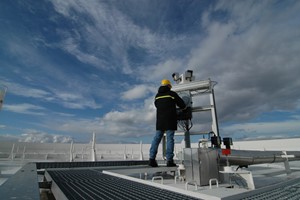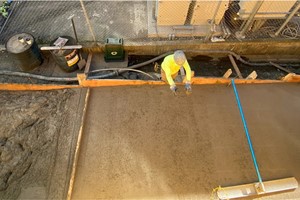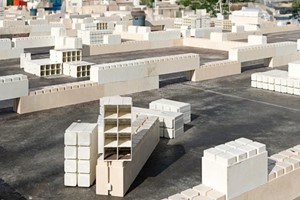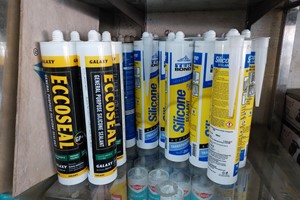Want to heat specific zones in your production hall? Need large volumes of heat in different places for a limited period of time? Is low operational cost important for you?
How to heat up warehouses, production halls and other large industrial facilities
Heating large industrial spaces is challenging. If done without proper thought, you’ll risk heating areas that really don’t need heating and your energy cost may skyrocket as a result. Very often, standard heating installations are not effective or even impossible to install.
Why is warming up large industrial buildings a challenge?
Height to ceiling: The distance from floor to ceiling in large industrial warehouses, manufacturing plants and similar facilities is often excessive. Since heated air expands and becomes less dense than the surrounding colder air it will end up below the ceiling. Where it is often not really needed.
Open windows and doors: During working hours, many industrial buildings like warehouses or assembly line plants will have to open gates, doors and windows frequently. This is a challenge because it will let your heated air escape to the outside while colder outside air enters your building.
Bad insulation: In very cold areas, insufficient insulation can dramatically increase your energy consumption. And it will make it virtually impossible to maintain a comfortable temperature everywhere in your building.
Varying heating needs in the same building: Warehouse and other industrial halls often need heating in selected zones. Sometimes for selected periods of time. For instance, a factory that produces parts for final products such as boats, industrial machinery or furniture often has one production line or area for each part. Each of them requires different climate conditions, so heating may be needed both to ensure the working comfort of employees and the proper flow of the manufacturing process. In this type of setting, it will often not be financially feasible to install a fixed heating installation.
Why portable heating solutions are great for large industrial buildings
Heating right where you need it: Because portable heaters can be placed exactly where you need heat, they do not waste energy. And they can be moved to wherever you need heat.
Flexible heating capacity: Portable heaters can be applied individually, or you can use several devices simultaneously in different zones all depending on your heating
requirements. Moreover, they come in varying sizes, so you can find one that meets your specific requirements.
Temporary or permanent heating: While designed to meet temporary heating requirements, many portable heaters can be integrated into existing fixed heating installations in buildings that require a more permanent supply of heat
Clean air: Indirect fuel heaters are capable of delivering 100% clean hot air free from any sort of exhaust gases.
Want to know more about portable heaters?
Master’s range of AIR-BUS mobile indirect fuel heaters are highly suitable for this type of environment. Apart from being quick and simple to install, they are easily moved or can be integrated into fixed installations when heating is needed permanently.
The heaters are available with a 136-225kW capacity range and are fitted with an external fuel tank connection to ensure continuous operation.
Particularly relevant in connection with large, tall buildings with a high volume of cold and warm air exchange (for instance caused by open doors or semi-open spaces), these air flow heaters ensure a constant high-volume supply of hot air blown into the room.
Those wanting to dramatically cut their energy costs can add the optional recirculation kit and suction tube. In the standard version, the heaters take outside air and then heat it up before circulating it. If this air is very cold, your energy costs to heat it up can become pretty substantial. But with the recirculation kit and suction tube installed, the heaters can simply take the indoor air, which is already heated, and then re-heat and recirculate it. The kit has been designed to mix outdoor air with recirculated air to avoid constant recirculation of the same air.
By means of up to 4 flex tubes per heater (each 7.6m long), you can have one heater deliver hot air to several zones, including hard-to-reach areas and different floors.
Naturally, the units can be fitted with room thermostats for efficient temperature control, robust hooks and forklifts for quick forklift or crane transportation.




